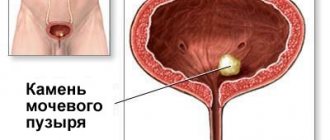Antidepressants and pregnancy: myths, statistics and clinical recommendations
Despite the unconditional importance of protecting the health of pregnant women, it is in this area of medicine that there is a significant limitation of existing knowledge. There are logical reasons for this: conducting full-scale clinical trials with pregnant women is impossible for ethical reasons, and observational studies are not very reliable.
There are especially many problems and blind spots in the treatment of already stigmatized mental illnesses. During pregnancy and early motherhood, many mental disorders, including depressive ones, often begin, recur, or worsen their course. At the same time, a pregnant woman often faces misunderstanding and even censure from society, which considers pregnancy and motherhood “a time of unconditional happiness.”
Despite the efforts of international organizations and the national professional community, in our country there remains low literacy in matters of mental illness not only among patients, but also among medical workers. Mental disorders have their own specifics, sometimes occurring “under the guise” of other diseases. Perhaps it is for this reason that they are difficult to understand and remain shrouded in myths and fears, and the drugs used to treat them are traditionally perceived by non-specialists as “very serious, severe.” Meanwhile, ignoring their symptoms can lead to quite serious harm to health, and in the case of a pregnant woman, affect not only the mother, but also the unborn child.
In this review, we will consider, from the perspective of evidence-based medicine, one of the most mythologized issues that arise at the intersection of psychiatry and obstetrics - the occurrence of depression during pregnancy and the possibility of using antidepressants for its treatment.
Note: For a correct understanding of the material presented, it seems important to outline the current meaning of the term “depression.” In general, depressive disorders include single (newly identified) and repeated episodes of depression (with a detailed clinical picture), as well as chronic disorders with less severe symptoms (dysthymia, “brief recurrent depression,” “subthreshold depression”). This group of disorders does not include bipolar disorders (history of manic/hypomanic/mixed episodes) or substance-related mood disorders. Despite some differences in the diagnostic criteria of the international and American classifications of diseases, the main points regarding mood disorders remain common: to verify a depressive state, a 2-week period of depressed mood (“obvious in comparison with the patient’s normal norm”, present most of the day) is sufficient and almost daily), accompanied by neurovegetative, psychomotor and cognitive impairment. Depending on the severity and quantitative representation of symptoms, the severity of depression is determined.
MYTH No. 1. Pregnancy is definitely a happy time in a woman’s life.
Considering the personal and social significance of pregnancy, childbirth and early motherhood in a woman’s life, attempts to completely deny the very possibility of the existence of mental ill-being during these periods seem quite natural. However, today we can confidently state the absence of any protective effect of pregnancy against mental disorders. Moreover, available scientific data allows us to classify pregnancy as an additional risk factor for their development.
The lifetime prevalence of clinical depression is estimated to be 16.1%. According to WHO, in Europe, about 7% of the population suffers from serious depression every year. Moreover, the risk of developing the disease in women is approximately 1.5-2 times higher than that in men.
A simple comparison of the presented figures already allows us to assess the significance of the problem in relation to women of childbearing age. The prevalence of clinically significant depression in pregnant women reaches 5-16% [sources: 1, 2, 3, 4, 5].
There is a misconception that a woman who has previously had symptoms of depression, especially if she has reproductive problems, will be “healed” when she becomes pregnant. This misconception is by no means safe, as it leads to a situation where a woman with a serious untreated disease enters into an initially planned pregnancy.
It is necessary to understand that depression is usually a chronic disease. The development of a repeated episode after the first one is likely in 50–85% of patients. The risk of relapse in women with a history of depressive disorders during pregnancy is extremely high. For patients with a history of recurrent depressive disorder with a high frequency of episodes, moderate to severe conditions in the past, it reaches 70%.
MYTH No. 2. Depression is just a bad mood, you need to be patient to give birth to a healthy child
Unfortunately, this definition of depression is fundamentally incorrect. Most mental disorders, and depression is no exception, are accompanied by a decrease in the patient’s ability to recognize the painfulness of existing manifestations (“decreased criticism”). Symptoms of depression affect the entire body to a large extent, particularly affecting behavior. With depression, it becomes more difficult for pregnant women to lead a healthy lifestyle and take proper care of themselves. Sleep and appetite are disturbed and fatigue increases. Depression is often combined with the use of psychoactive substances and alcohol. The most dangerous manifestations of the disease are suicidal thoughts and actions.
Numerous studies confirm the negative impact of maternal depression on fetal development, pregnancy, and childbirth [sources: 1, 2, 3, 4]. In particular, there is a connection with miscarriage and premature birth, severe forms of early toxicosis, preeclampsia, growth retardation, development and disorders of catecholamine metabolism in the child.
Depression is a disease that requires treatment, which, however, does not necessarily imply the use of drug therapy. In the case of pregnancy, the issue of a balanced choice between pharmacological treatment, psychotherapy, biological non-drug methods (electroconvulsive therapy (ECT), as a particular example) and their combinations is especially acute. In general, the preferred therapy depends on many characteristics of both the patient and her condition, as well as her environment and family resources.
MYTH No. 3. Pregnant women should not be prescribed psychotropic drugs
This myth is based on the popular belief that antidepressants are harmful, cause many side effects, and are addictive. It is important to understand that harmless drugs simply do not exist. Medicine is a balance between potential risks and benefits. In fact, no one should take any medication WITHOUT a good reason.
In general, antidepressants are relatively safe medications. They are definitely not addictive. When abruptly stopping an antidepressant, many patients actually experience a number of unpleasant effects, such as dizziness, irritability, anxiety and some others, but they usually go away within 1-2 weeks. There is no strong desire to take the drug again. Also, with time of use of the drug, the need for increasing the dose does not increase.
It is extremely important to note that all drugs used to treat mental disorders penetrate the hematoplacental barrier, which means they enter the fetal blood. The organs and systems of a child in the womb are still immature and, accordingly, more vulnerable to any influences.
The use of drugs during pregnancy is associated with the following main risks: negative effects on fetal development, neonatal toxicity, postnatal behavioral consequences. In this regard, the most studied are tricyclic antidepressants (TCAs) and selective serotonin reuptake inhibitors (SSRIs). Both groups of drugs are now recognized as generally safe with regard to teratogenicity and postnatal behavioral consequences. At the same time, there is a significant likelihood of developing infant maladaptation syndrome, which requires mandatory obstetric care in a medical institution with the capabilities of intensive neonatal therapy.
It should be noted that studies demonstrating possible side effects of antidepressants, including teratogenic ones, exist. It is not always easy to draw a clear conclusion about the effect of medications, but not depression itself or known associated factors. Especially when it comes to comparing women with severe forms of depression that greatly affect their well-being and require high doses of antidepressants with those with mild or moderate depression. However, the risks of drug therapy during pregnancy must be treated with extreme caution. Based on the available data, most researchers agree that paroxetine is not recommended as a first-line drug.
Clinical recommendations from different countries agree that the use of antidepressants during pregnancy requires a personalized approach and should be based on the balance of risks for the child and mother. The decision to prescribe drug therapy should be made jointly with the patient, and it is highly advisable to involve her partner.
MYTH No. 4. For women taking antidepressants, with the onset of pregnancy, it is necessary to urgently discontinue the medications or, at a minimum, radically reduce their doses
Unfortunately, published data indicate extremely high rates of recurrence of depression in women who refuse treatment after pregnancy. Moreover, due to physiological changes in a woman’s body (increase in circulating blood volume, liver and kidney activity, decrease in protein-binding capacity, increase in adipose tissue), on the contrary, an increase in drug doses may be required.
In a well-known study, symptoms returned in 68% of women who stopped taking antidepressants after pregnancy, 35% of patients who reduced their doses, and 25% of women who continued their original therapy.
MYTH No. 5. Taking psychotropic drugs throughout life leads to an increased risk of relapse during pregnancy, so young women should generally refrain from using antidepressants
Apparently, the emergence of this misconception is associated with erroneous ideas about the “narcotic” effect of antidepressants, as well as with a high rate of recurrence of depressive disorders in women who refuse therapy after pregnancy.
In 2011, data was published refuting this myth. The condition of 778 patients with a history of depressive disorders was studied. The presence of 4 or more previous episodes of depression, as well as some ethnic characteristics, were identified as predictors of an increased risk of developing depression during pregnancy. No relationship with the presence/absence of experience in taking medications could be identified.
General recommendations
Summarizing the above, I would like to list those opinions and recommendations in which the majority of researchers are unanimous.
Depression is one of the most significant conditions accompanying pregnancy due to its high prevalence, impact on the health of the mother and child, and therapeutic difficulties. For patients with existing mood disorders, pregnancy should be planned, and ideally management should be agreed upon by the woman, her partner, obstetrician and psychiatrist before conception.
At the pregnancy planning stage, it is advisable to normalize the patient’s lifestyle, involve a partner, assess the possibility of discontinuing drug therapy or switching to a safer drug, and involve psychotherapy.
In the case of an already established pregnancy, an assessment of the severity of the woman’s condition, her past experience, including individual sensitivity to drugs, as well as the tendency to a severe course of the disorder is considered mandatory. In moderate to severe depression, the disease burden far outweighs the risks of medication use. With a mild/moderate course of the disorder, the decision to take antidepressants seems more ambiguous.
For patients with mild depression, as well as women who are on pharmacological treatment and have not had significant symptoms of depression for at least 6 months in the absence of severe episodes in the past, it is advisable to try to discontinue the drug or, at least, switch to an antidepressant with a lower risk. In this case, a prerequisite for changing therapy is active monitoring of the woman’s condition. If the condition worsens, it is proposed to include psychotherapy, resume pharmacotherapy and/or prescribe non-drug biological treatment (electroconvulsive therapy ECT, transcranial magnetic stimulation TMS).
The use of antidepressants in any case requires mandatory informing the patient about possible risks (preferably with the involvement of her partner in the decision). It is preferable to use the most studied and relatively safe drugs in monotherapy with adequate doses. Be sure to take into account the patient’s past experience (individual response to treatment). Moreover, despite the fact that discontinuation of therapy on the eve of childbirth reduces the risk of infant maladjustment syndrome, the vast majority of experts categorically do not recommend leaving a woman without medications during the peripartum period.
It is important to understand that depression is a serious problem associated not only with a woman’s mood, but affecting her entire body, and therefore affecting the condition of the fetus. Depression in a pregnant woman requires treatment; ignoring the symptoms is unacceptable. However, it is also unacceptable to frivolously encourage the uncontrolled use of medications, even from a group of relatively studied ones.
In recent years, the possibilities and niches for the use of alternative methods of treating depression have been increasingly discussed: not only well-known psychotherapy, but biological non-drug methods (in particular TMS and ECT). By the way, in recent years the ECT procedure has been significantly improved, and today it demonstrates good results with low risks of use. Indications for its implementation are severe, resistant depression, psychotic depression and catatonia.
Separately, I would like to clarify that although the vast majority of recommendations include the inclusion of psychotherapy and self-help methods as the first line of help for mild depression, and as a way to enhance therapy for more severe cases, one should, firstly, distinguish therapeutic procedures from fashionable training/coaching, and secondly, understand that the possibilities of psychotherapy are limited, and a high degree of evidence for research on the methods used is simply unattainable. In addition to the problem of insufficient knowledge about the nature of disorders and difficulties in homogenizing groups, which is typical for work in the field of psychiatry in general, in the case of psychotherapy, procedures for unifying the method used, as well as blinding the study, are difficult to implement. Despite all the limitations in interpreting the results of the studies, structured psychotherapeutic approaches appear promising. Cognitive-behavioral and interpersonal therapies are most often recommended in the context of treating depression in pregnant women.
Authors: psychiatrist and psychotherapist Nadezhda Ilyina and candidate of medical sciences, obstetrician-gynecologist Elena Grodnitskaya
Subscribe to Medfront on social networks: Facebook, Vkontakte, Telegram, Instagram
Taking antidepressants during pregnancy does not harm the baby's health
2 minutes
1057
The use of antidepressants during pregnancy does not have long-term negative effects on the child's neurodevelopment and future behavior. However, antidepressants may be associated with an increased risk of postpartum hemorrhage. These results were found in three studies published in BJOG: An International Journal of Obstetrics and Gynecology.
Depression and anxiety are fairly common disorders during pregnancy. The use of antidepressants (such as selective serotonin reuptake inhibitors) is becoming more common, but until now it was not clear whether this increases the risks for the fetus or leads to any future health problems for the mother or child.
A published study from the Norwegian Institute of Public Health assessed the effect of prenatal antidepressant exposure on children's motor skill development at 3 years of age (in a sample of 51,404 children from the Maternal and Childhood Longitudinal Study). Mothers of 159 children reported taking long-term antidepressants during pregnancy. They formed an experimental group. Their children showed some lag in gross and fine motor skills compared to other children at 3 years of age, but the differences are so small that this cannot be considered a basis for clinical recommendations against prescribing these drugs.
In another study, Australian researchers analyzed data from 49,000 mothers from a national registry to look for links between their antidepressant use and behavioral problems in their 7-year-old children. It turned out that maternal depression that was not corrected with medication (231 children) was associated with a greater risk of behavioral problems in children compared with children (210 people) whose mothers took antidepressants. Behavioral problems included hyperactivity, attention deficit disorder, and conflict with peers.
In a third study, the same Australian researchers cited assessed the risk of postpartum hemorrhage (blood loss in the first 24 hours after birth) in mothers who took antidepressants in the last three months of pregnancy. It turned out to be around 16%, while in the general population it is about 11%.
“These studies add to the growing body of evidence that antidepressants are safe to take during pregnancy. Although some threats are increasing, the data suggest that the risks of untreated depression appear to outweigh the risks of taking these drugs,” BJOG deputy editor John Thorp wrote in an editorial.
Source:
New studies show no long term effects of antidepressant use during pregnancy
The use of antidepressants during pregnancy has no long term neurodevelopmental or behavioral effects on the child, however they may be associated with an increased risk of postpartum haemorrhage, suggests the findings from three studies published in BJOG: An International Journal of Obstetrics and Gynaecology (BJOG ).
EurekAlert!










